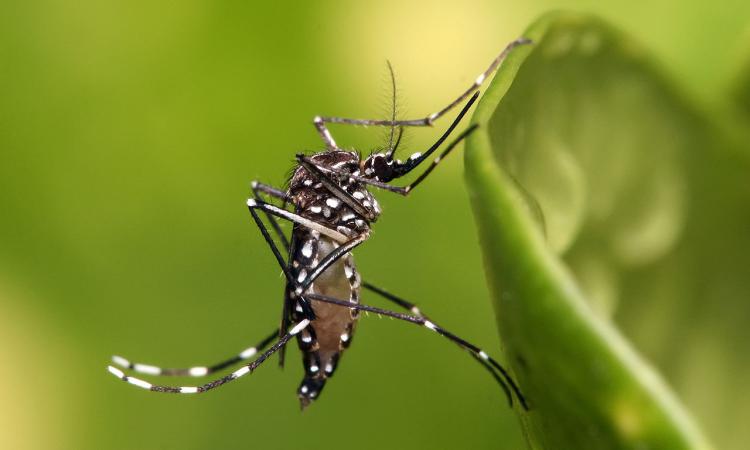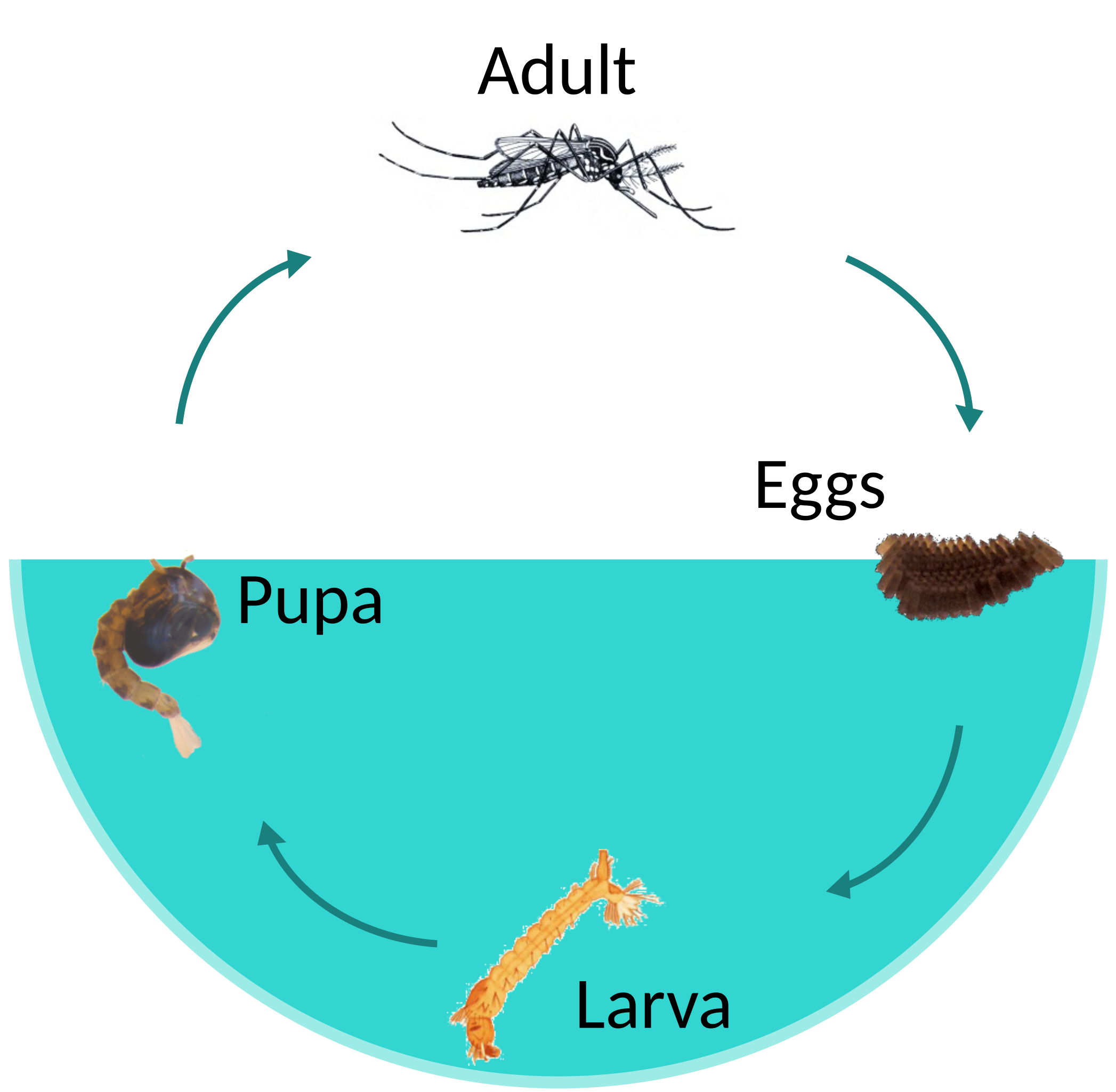
The erratic monsoon and the increasing cases of Zika
India’s struggle with the moody monsoon is far from over. While massive downpours and increasing reports on rain related disasters such as floods and landslides have created havoc and led to loss of lives, property, infrastructure and livelihoods, other challenges lurking at the background are raising their heads.
The Zika virus, was first identified in Uganda in 1947 and is mainly found in the tropical and subtropical regions of Africa, America, Southern Asia, and the Western Pacific. It made its presence known in India in 2016 is making headlines again, with recent cases reported from different corners of the country. Maharashtra and Kerala have seen significant numbers infected with the virus, and the virus has now also spread to Karnataka.
What is Zika virus
Zika virus is a mosquito-borne flavivirus which is mainly transmitted through the bite of a female Aedes mosquito. Other modes of transmission of the virus include mother-to-child transmission, sexual transmission, infection through blood transfusion and exposure in clinical or laboratory settings.
Signs and symptoms of Zika
Most people, about 80 percent, of those infected with Zika virus do not experience any symptoms. In those which show symptoms, they appear within a week of being bitten by an infected mosquito and can last for several days to a week.
The mains symptoms include low grade fever, an itchy maculopapular rash (red spots and bumps) that starts on the face and spreads to the rest of the body, joint pain and swelling in the smaller joints of the hands and feet, sometimes accompanied by muscle pain, red, irritated eyes that can appear similar to pink eye but without pus, muscle pain, headache, fatigue: Generalised tiredness and lack of energy that can persist even after other symptoms have resolved, abdominal pain, vomiting causing dehydration and weakness and eye pain
When can the infection get serious
The infection can be dangerous especially for pregnant women. The CDC has warned that getting infected with Zika virus (ZIKV) during pregnancy can lead to microcephaly (incompletet brain development) and other significant brain-related issues in foetuses. It can also cause Guillain-Barre syndrome, a neurological disorder that can cause paralysis.
Due to the potential risk of microcephaly resulting from maternal Zika virus infection, it is recommended that the mothers and babies infected with the Zika virus undergo an assessment to detect potential congenital infection and neurological complications.
Treatment for Zika virus
There is no vaccine or medicine for Zika. Prevention is the best way ahead. Taking paracetamol for pain relief and fever, taking rest and remaining hydrated can help to relieve symptoms. Pregnant women who may have been exposed to Zika have to be monitored for birth defects.
There is no widely available test for Zika. To detect the virus, a blood or tissue sample from the first week in the infection must be sent to an advanced laboratory so the virus can be detected through sophisticated molecular testing.
Why are cases rising?
Zika infections too like dengue and malaria are related to the spread of mosquitoes, that act as carriers for the virus that causes the infection. Environmental factors and climate related changes are creating conducive conditions for mosquitoes to thrive in India while human anthropogenic activities along with urbanisation and overcrowding is adding fuel to fire. Water plays an important role in helping mosquitoes thrive.
The life cycle of Aedes mosquitoes that lead to zika infections consists of four stages namely egg, larva, pupa, and adult and adults emerge from seven days to several weeks from the eggs. Female mosquitoes lay black-colored single eggs that need moist surfaces like mud close to the water or in locations that experience flooding, such as marshes, tree holes. They also grow in moist areas such as the point of connection between the leaf and stem.

Objects filled with water in urban areas such as clay pots, plastic containers, and tires are also common egg-laying sites. In the water, eggs hatch in batches over days or weeks and some eggs require multiple soakings in water before hatching. Eggs can endure long periods of dry conditions and remain viable for many months, even surviving cold winters and other adverse climatic conditions. The larval stages of Aedes mosquitoes are aquatic and cannot survive without a water source.
Climate change is creating favourable conditions for mosquitoes to proliferate
Mosquitoes are the most susceptible to climate change because the initial part of their life cycle is dependent on the availability and quality of water. Thus factors such as higher temperature, altered precipitation patterns, humidity and wind have a great impact on proliferation of mosquitoes.
Higher temperatures aid mosquito growth
Global warming has led to early appearance of mosquitoes that persist for long periods of time. This is because mosquitoes are cold-blooded and need the appropriate temperature to survive and develop. The emergence and reemergence of Zika virus has been found to be associated with high temperature and shifts in the rainfall patterns, which are rapidly changing in India due to climate change.
The Aedes mosquitoes that transmit the virus cannot tolerate temperatures below 10°C and above 35°C. Rise in temperatures leads to acceleration in larval development of mosquito vectors and adult female mosquitoes responsible for transmitting the Zika virus feed more frequently, digest blood more quickly and thus increase transmission. Environmental temperature also affects the viral replication rate and decreases the incubation period of the virus in the mosquitoes with rise in temperature increasing the risk of infection through mosquito bites.
Rainfall patterns affect mosquito breeding
There is a complex relationship between rainfall patterns/flooding and mosquito breeding. Excessive rainfall can lead to expansion of vector breeding sites and larval habitat, but can also flush away the mosquito larvae from the pooled water. However, there is usually a rebound increase in the vector population approximately 1 week after the flood due to the formation of new breeding sites.
Populations in the flood-affected areas face increased exposure to mosquitoes due to housing damage. The basic water supply of the area, sewerage and sanitation are also disrupted by heavy floods, that have been linked to an increase of container stored water in households and proliferation of mosquitoes due to unhygienic conditions.
Mosquitoes also tend to proliferate during dry conditions in countries such as India. Storing rainwater is common throughout tropical regions where the rainy season is followed by an extended dry period, unavailability of tap water at the doorstep that makes people store large amounts of water, which also proliferates mosquitoes.
Humidity helps survival
Humidity is the concentration of water vapor in the atmosphere and is connected to rainfall. Low humidity has a negative effect on the survival of Aedes mosquitoes, which cannot tolerate humidity levels below 42 percent. Relative humidity also affects the survival of the eggs and egg hatch rates of Aedes mosquitoes increase with relative humidity.
Wind affects distribution of mosquitoes
Wind may affect the mosquitoes biting activity both positively and negatively. The biting opportunities for mosquitoes are reduced by a strong wind while at the same time a strong wind extends their flight distance. Wind can also change the spatial distribution of mosquitoes during the monsoon season.
Urbanisation is adding fuel to fire
While climate change does have a part to play, it is poor water management practices and governance mechanisms in urban areas that are adding fuel to fire. Come rainfall, urban flooding is a regular phenomenon in Indian cities as concretisation, destruction of water bodies leaves no place for the water to percolate. Unplanned urbanisation that leads to unplanned growth without proper waste disposal mechanisms or infrastructure for sanitation can lead to greater incidence of mosquito borne illnesses. The spread of Zika in densely populated areas is facilitated by presence of an efficient vector, poor environmental sanitation and population mobility.
Poor water storage practices, unavailability of flowing water, poor sewage disposal mechanisms, open drains, poorly constructed roads with potholes, strewing of plastic wastes and containers in areas such as slums, large amounts of untreated sewage disposal in water bodies which can lead to growth of water hyacinth and stop the flow of water and lead to stagnation can also trigger breeding of mosquitoes. In the major cities with affluent communities, mosquito breeding sites are also provided in the form of ornamental gardens with flower pots, fountains, vases, birdbaths and swimming pools and other open water sources.
Travel presents risks
Human movement is one of the important factors that circulates the invasive pathogens and vectors. Mosquito-borne diseases are all endemic in tropical or sub-tropical areas, but travelers pose a transmission risk in regions where the pathogen is absent but where the vector is present.
How can citizens prevent getting infected by Zika?
By preventing mosquito bites
Protection against mosquito bites during the day and early evening is important to prevent Zika virus infection, and special care is required for pregnant women, women of reproductive age and young children.
Wearing light coloured clothing and covering as much of the body as possible, using mosquito nets, physical barriers such as window screens and closed doors and windows and applying insect repellent to skin can help prevent mosquito bites.
Young children and pregnant women should sleep under mosquito nets if sleeping during the day or early evening. Travellers and those living in affected areas should also protect themselves from mosquito bites.
Destroying mosquito breeding sites
Aedes mosquitoes breed in small collections of water around homes, schools and work sites. Elimination of mosquito breeding sites, including covering water storage containers, removing standing water in pots, pans around the house and cleaning up trash and used tires in the surroundings can help in preventing proliferation of mosquitoes and preventing mosquito bites.
Encouraging women and men to practice safe sex
For regions with active transmission of Zika virus, all people with infection and their sexual partners (particularly pregnant women) should receive information about the risks of sexual transmission of Zika virus. Sexually active men and women must be counselled and offered a full range of contraceptive methods to be able to make an informed choice.
While ongoing vigilance and preparedness of the public health systems in meeting the challenge is crucial and citizens need to play their part, municipal bodies/urban area authorities need to pull their socks up and set right the poor water management and governance practices that are slowly making our cities hotbeds of diseases, filth and mismanagement. They need to act urgently by working on correcting and preventing stagnation of water in the numerous potholes created in the cities, cleaning up of the water bodies and preventing untreated sewage from getting into them, better garbage management mechanisms and reviewing the rampant and unsustainable concretisation and urbanisation that is eating up our cities. Temporary, quick fix solutions will do little to change the situation that will continue to repeat every year.
/articles/changing-waterscapes-trigger-spread-zika-urban-india